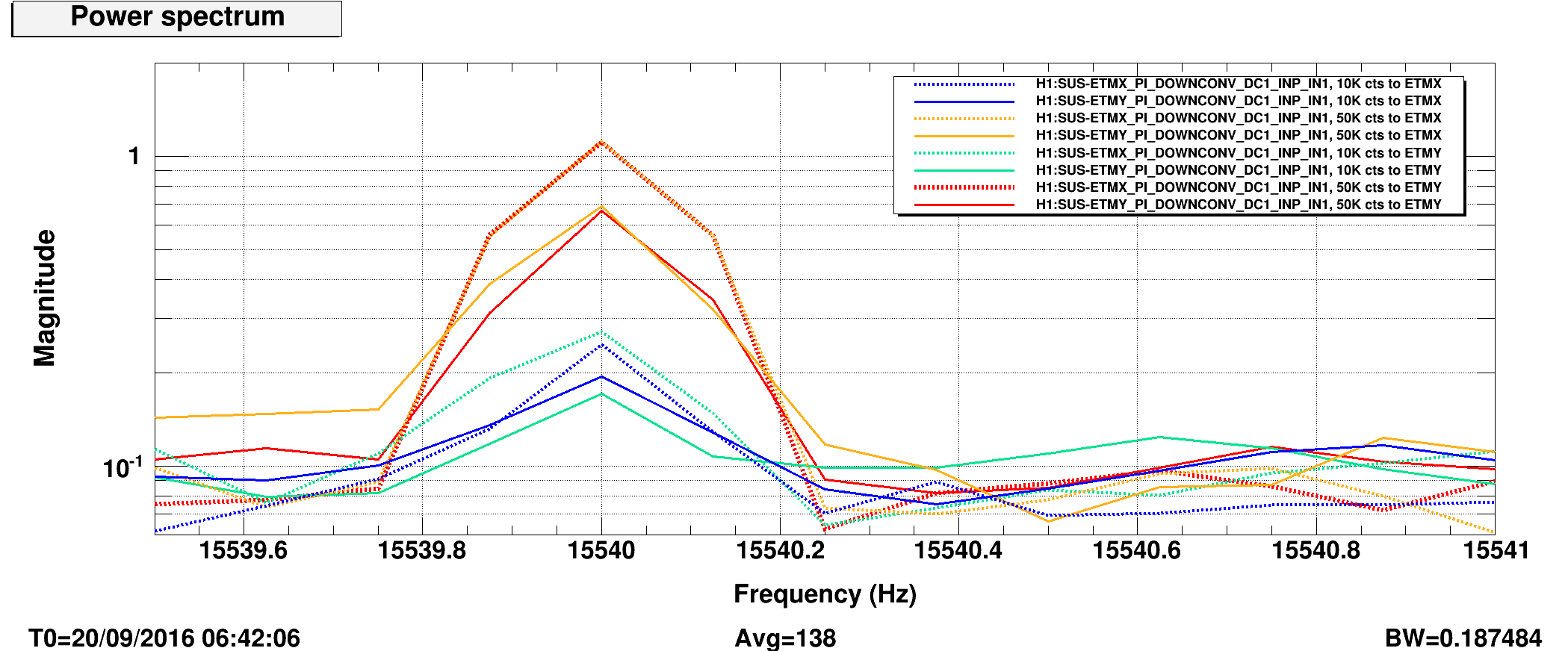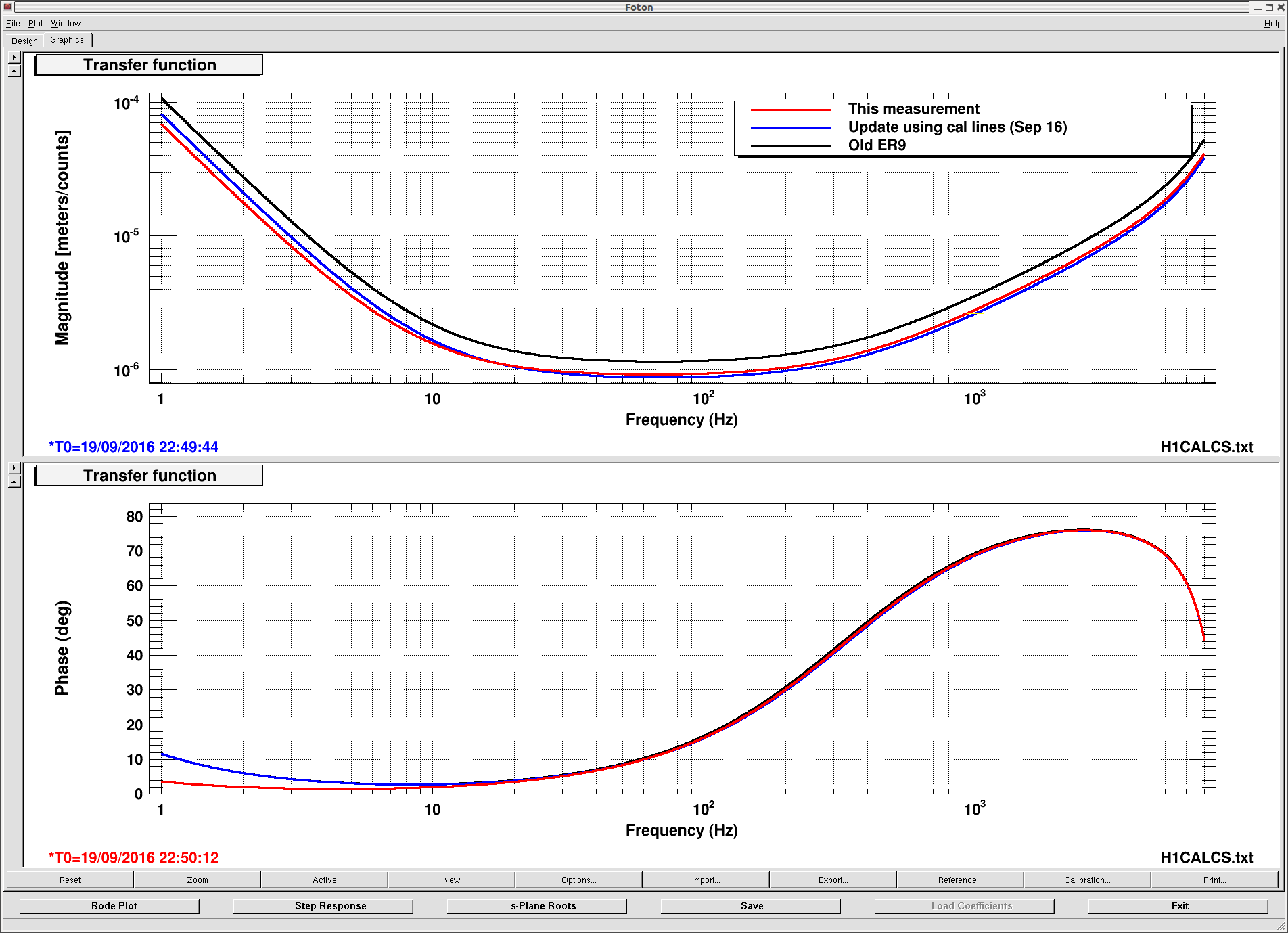Jeff K, Sheila, Chris Whittle
Having recently taken measurements for the CARM and IMC loops with the newly installed 200 kHz pole (aLOG 29735), we have begun an investigation into whether we can boost the gain in CARM to help mitigate frequency noise in DARM without compromising loop stability. We used the following form of the CARM open loop gain:
G_CARM ~= g_CARM * H * ( g_IMC * G_IMC / (1 - g_IMC * G_IMC) )
where g_IMC and g_CARM are tweaked, and G_CARM and G_IMC were measured (see above). H is a combination of the electro-optical CARM plant of the IFO and the electro-optical IMC plant, and is calculated from the above measurements. We are ignoring the slow path here as we are far above the 30 Hz crossover. See aLOG 22188 for more details.
Note that the closed loop gain of the IMC was extrapolated back to 1 kHz from 10 kHz (assuming a unity CLG below 10 kHz).
The OLG of the IMC loop shows that we can't get away with an IMC gain much grater than 2 dB without hurting our phase margin too much. Similarly, the loop suppression of the IMC loop significant gain peaking above 2 dB.
With g_IMC = 2 dB, our CARM phase margin suffers above g_CARM = 2 dB. This gives us a a factor of 2.08 dB suppression in our CARM loop suppression. We therefore propose increasing CARM and IMC loop gains to g_CARM = 2 dB and g_IMC = 2 dB. Although this introduces some additional UGFs, all are stable, and the worst of which has a phase margin of 31.6∘.
The script for producing these plots can be found at:
/ligo/home/chris.whittle/Documents/imc-pdh/gain-investigation
/ligo/home/chris.whittle/Documents/imc-pdh/gain-investigation/imc_gain.py
Explore alternative values by modifying the setting of gainRange (line 93 as of this aLOG).
































TJ, Andy, Josh
Bruco results are here using OMC-DCPD_OUT_DQ as the main channel: https://ldas-jobs.ligo.caltech.edu/~thomas.massinger/bruco_1158386417_OMC_DCPD/
The targeted time was 10 minutes beginning at 6:00 UTC on September 20th.
OMC Null shows up pretty strongly at very low frequencies, maybe there's a slight detuning between the OMC DCPDs?
It looks like most of the noise below 100 Hz is correlated with vertex length control signals (MICH error/control, PR2/PRM/BS drive signals).
Attachment 1 zooms in on the coherence between MICH/PRCL and DARM. Coherence with MICH peaks at around 30 Hz and falls off as it approaches 200 Hz.
From 100 - 200 Hz it looks like the IMC alignment error signals start to show up more strongly.
I'll happily rerun with a different target channel if it would be useful.